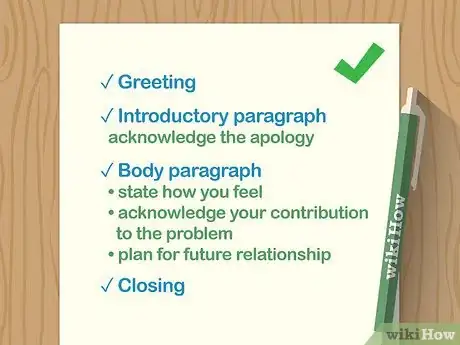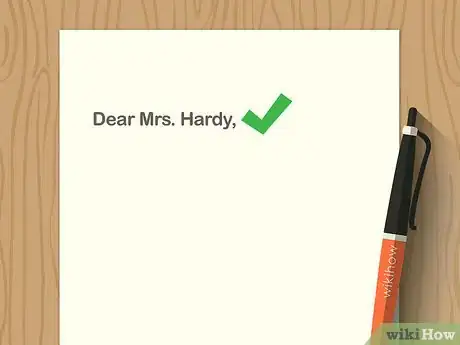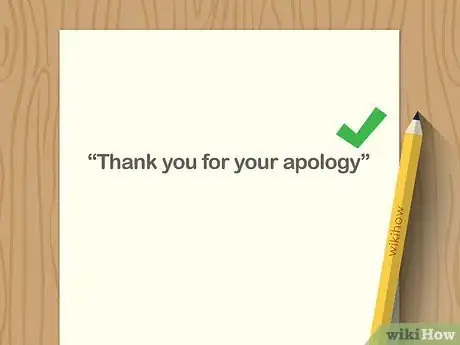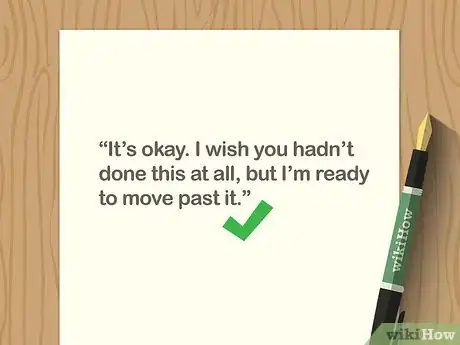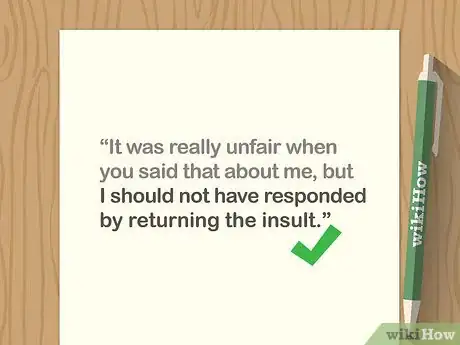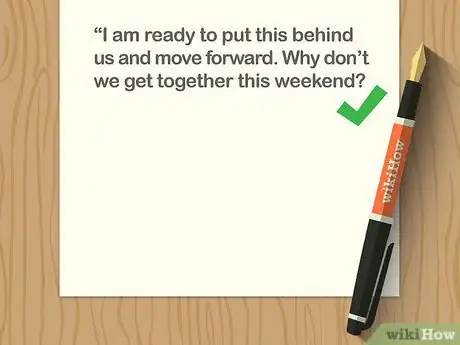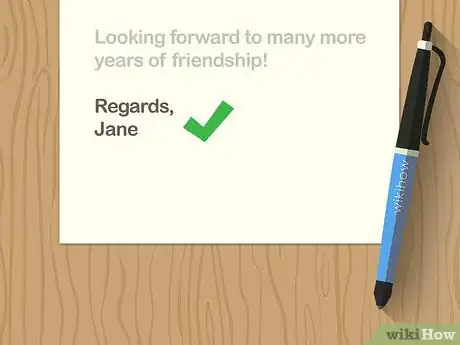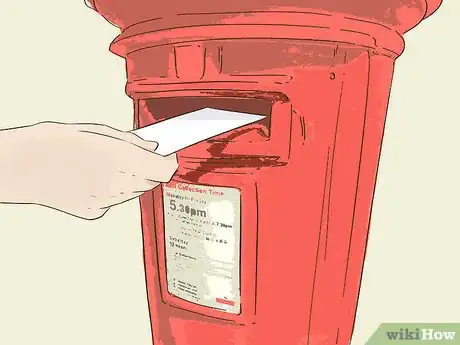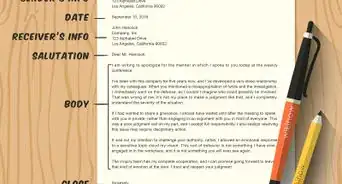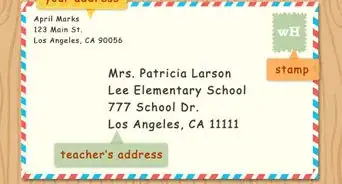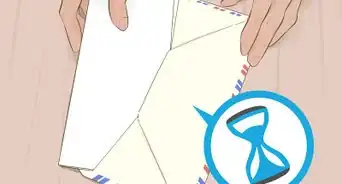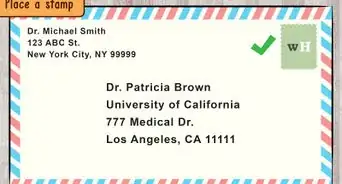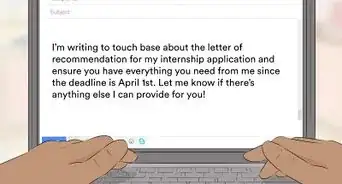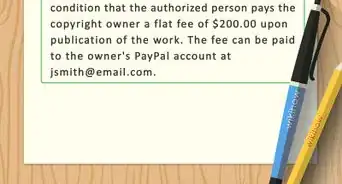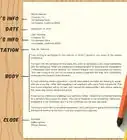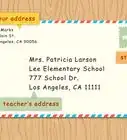This article was co-authored by Tami Claytor. Tami Claytor is an Etiquette Coach, Image Consultant, and the Owner of Always Appropriate Image and Etiquette Consulting in New York, New York. With over 20 years of experience, Tami specializes in teaching etiquette classes to individuals, students, companies, and community organizations. Tami has spent decades studying cultures through her extensive travels across five continents and has created cultural diversity workshops to promote social justice and cross-cultural awareness. She holds a BA in Economics with a concentration in International Relations from Clark University. Tami studied at the Ophelia DeVore School of Charm and the Fashion Institute of Technology, where she earned her Image Consultant Certification.
This article has been viewed 159,039 times.
Knowing how to accept an apology in writing is helpful in both professional and personal situations. If you are a telecommuter who communicates with your supervisors or coworkers via email, you may need to learn this skill. If you have friends and relatives in other geographic locations, phone or in-person contact may be difficult. The letter or email you write to acknowledge and accept an apology can have important repercussions for your relationship, so it’s important to take your time and carefully think through what you will write.
Steps
Processing the Apology
-
1Read or listen to the apology calmly and carefully. Withhold any immediate reaction until you are able to calmly reflect on what the person has. Listen or read with an open mind and be willing to entertain the other person’s perspective. Tell the person you appreciate their apology, but you need some time to process it.[1]
- Take some time to calm yourself down before trying to assess the apology.
- Try deep breathing to regain your composure.
- Whether you are receiving an apology from a friend or family member, or someone you work with, it’s important to give the apology your full consideration.
- If the person has written you an apology letter, find a quiet place where you can focus on reading the apology without distraction.
-
2Determine if the apology is genuine. An apology should demonstrate regret and an acknowledgement that the person has done something wrong or feels remorse in some way. A true apology will show that the person is taking appropriate responsibility for the situation they have caused.[2]
- The person should be specific about their apology.
- A false apology is one that deflects responsibility in some way, on to you, or on to someone or something else.
- For example, saying “I’m sorry if you felt offended,” is not a true apology. Rather than apologizing for their own action, they are deflecting responsibility back on to you.
- An apology may also be a disguised justification. A person may slip into an explanation for why they did what they did without actually saying they are sorry for doing it.
- The person should offer to fix the situation if possible. For example, if you asked them to water your house plants while you were away and they forgot, an appropriate apology might include an offer to replace any plants that died as a result of their neglect.[3]
Advertisement -
3Forgive the person for your own wellbeing. Even if the apology is a poor one, it’s in your best interests to embrace empathy and forgive. Release your negative emotions by crying, writing in a journal, or talking with a friend or therapist.[4]
- Depending on the situation, complete forgiveness may take days, months, or even years.
- Forgiveness does not mean forgetting or moving forward with no consequences. It means letting go of hurt feelings and not holding onto a grudge.
- Forgiveness does not necessarily mean that you have to keep a connection to the person. If it is someone who routinely causes offense or hurt, for example, you can forgive them but also choose to end your relationship with them
Writing Your Response
-
1Open your letter with a standard greeting. Start your response with a basic introduction, such as, “Dear Jacob.” If the person is a colleague or professional contact, you can try a more formal greeting by using their title, like “Dear Mrs. Hardy,” or “Dear Professor Thomas.”[5]
-
2Acknowledge the apology in the opening sentence. Depending on the circumstances, you might want to use a formal or casual tone. “I accept your apology,” or "Thank you for your apology" are appropriate formal responses for business dealings. If the apology comes from a friend or family member, you can be more informal in your response. Try, “I hear what you are saying," “Thanks,” or “It’s okay.”
- If you’re not ready to move forward, acknowledge their apology by stating: “I appreciate your apology, but I am unable to accept it at this time.”
- No matter how you choose to respond, make sure it’s a true reflection of your feelings. You don’t want to get caught up in crafting a response that isn’t actually genuine.
-
3State how you feel about the situation in the body of your letter. Don’t leave the person guessing. In addition to acknowledging their apology, let them know why you were offended or upset. Be honest and clear in your writing. Explain how the situation felt for you and why it impacted you the way that it did. For example, you can write:[6]
- “I am glad you apologized. It really hurt my feelings when you made a joke at my expense.”
- “It’s okay. I wish you hadn’t done this at all, but I'm ready to move past it.”
- “I hear that you regret what you did. I’m trying to move past this but it has really impacted how I feel about our relationship. I will need more time to think about things.”
-
4Acknowledge your contribution to the problem if appropriate. Sometimes the problem really is someone else’s fault, but it may be that both parties involved made some missteps. Reflect on whether this applies to your situation and take responsibility where it makes sense. For example:
- You can write: “It was really unfair when you said that about me, but I should not have responded by returning the insult.”
- Alternatively, try: “It was your responsibility to make sure things went smoothly that day, but I realize now that I should have made sure you had more help.”
-
5Close the body of the letter with a clear plan for the future of your relationship. Make it clear if you want to end the relationship with them. Or, let them know you are ready to move past the incident in question. If it is a business relationship, you may need to let the person know you will no longer be working with them. If it is a more personal relationship, you should let them know if and when you would like to see them or talk to them again. For example:
- For example, you can try: “I am ready to put this behind us and move forward. Why don’t we get together this weekend?”
- Another approach is to write: “While I accept your apology, this incident has made me re-evaluate our business arrangement and I will not be renewing your contract at the end of this month.”
-
6End your letter with a closing that matches the tone of your response. If you are telling someone that you are unable to accept their apology or continue your relationship with them, sign off with a closing that is not too familiar. Try using “Sincerely,” or “Regards,” in this case.[7]
- For a more positive closing, consider, “Best wishes,” or “Warm regards.”
-
7Mail or email the apology acceptance letter. To limit misunderstandings should the email or letter get lost, ask the recipient or the mail service to confirm receipt.
References
- ↑ https://www.bbc.co.uk/worldservice/learningenglish/radio/specials/1331_howto_feedback/page4.shtml
- ↑ https://www.cnn.com/2017/11/10/health/how-to-apologize-say-sorry/index.html
- ↑ https://au.reachout.com/articles/how-to-say-sorry-and-mean-it
- ↑ https://www.canr.msu.edu/news/forgiveness_what_is_it_and_how_do_i_do_it
- ↑ https://owl.purdue.edu/owl/subject_specific_writing/professional_technical_writing/basic_business_letters/index.html
- ↑ https://www.canr.msu.edu/news/forgiveness_what_is_it_and_how_do_i_do_it
- ↑ https://owl.purdue.edu/owl/subject_specific_writing/professional_technical_writing/basic_business_letters/index.html
